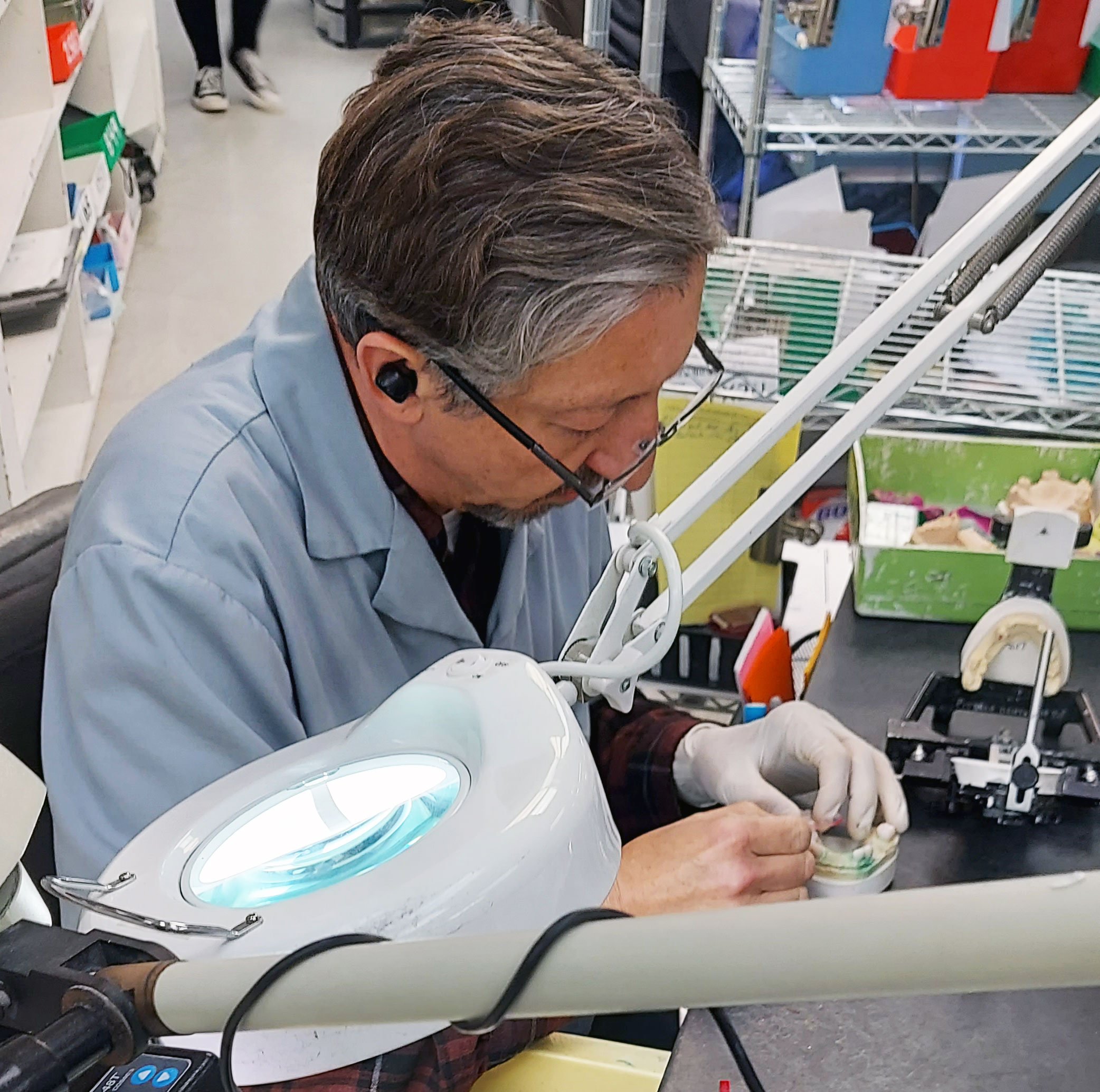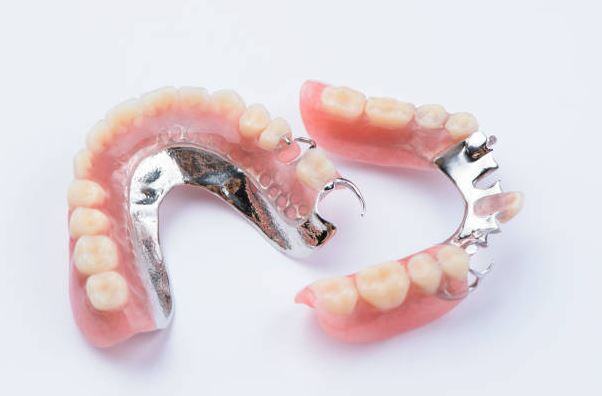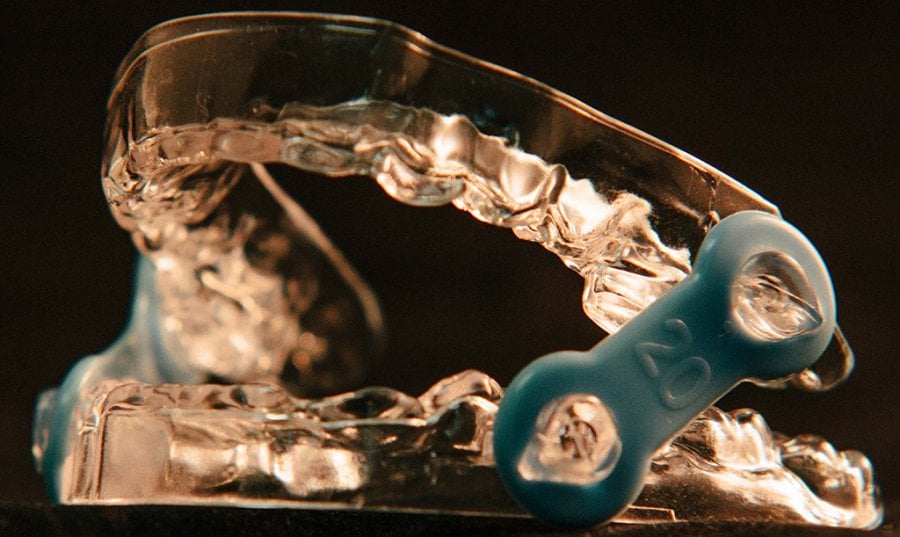At Pittman Dental Laboratory, delivering exceptional dental restorations is not just a promise—it’s a process. With over 50 years of experience serving dental care providers, Pittman has developed a meticulous 8-step quality control (QC) system designed to ensure every case meets the highest standards of accuracy, aesthetics, and functionality.
Pittman Dental Laboratory Blog
Recent Posts
Inside Pittman Dental Laboratory’s 8-Step Quality Control Process: Precision at Every Turn
Topics: Remake Percentage, Dental Lab, quality control
How to Care for Your Dental Implants and Follow Up with Your Doctor
Dental implants are a life-changing solution for many patients, offering the comfort, function, and appearance of natural teeth. But once the implants are placed, proper care is essential to protect your investment and ensure long-term success. We spoke with one of Pittman Dental Laboratory’s experienced chairside technicians to gather expert advice on how patients should care for their implants and how to follow up with their dental provider after surgery.
Topics: Dental Implants, All on X, Dental Advice
How Dentists Can Boost Business During Slow Summer Months
Topics: new patients, Dental Advice, Increasing Revenue, Chair Time
Pittman Dental Laboratory Account Managers are excited to share valuable insights and techniques with our Doctors. In this blog, you'll discover two proven methods we've developed over the years to help ensure greater success when placing a crown beneath a partial denture.
Topics: crown and bridge, Denture, partials
EMA® Oral Appliance Overview
The EMA® (Elastic Mandibular Advancement) device is a custom-fit oral appliance designed to help reduce or eliminate nighttime snoring and mild to moderate obstructive sleep apnea (OSA). It works by gently moving the lower jaw forward using adjustable elastic straps, which helps open the airway for improved breathing during sleep.
Topics: appliances, EMA, removables, sleep apnea
Maximizing Chair Time: How Pittman Dental Laboratory Helps Dentists
In the fast-paced world of dentistry, efficiency is the key to profitability. Dentists know that their most valuable resource isn’t just their skill or equipment—it’s chair time. Every minute a patient spends in the chair should be focused on delivering high-quality care without unnecessary delays. At Pittman Dental Laboratory, we understand this, and we partner with dental practices to streamline workflows, reduce procedural inefficiencies, and maximize revenue potential.
Topics: Dental Technology, Dental Lab Account Managers, Increasing Revenue, Digital Rx
Revolutionizing Dental Restorations: The Power of 3D Printing in Pittman Dental Laboratory
In the ever-evolving world of dentistry, 3D printing has emerged as a game-changer, transforming how dental laboratories operate and how dentists provide care to their patients. At Pittman Dental Laboratory, we embrace this cutting-edge technology to enhance efficiency, improve accuracy, and streamline workflows—delivering superior results to our partnering doctors and their patients.
Topics: Dental Technology
Pittman Dental Laboratory in 2025: Revolutionizing Personalized Care
As the dental industry strides further into 2025, Pittman Dental Laboratory stand at the forefront of innovation, transforming how dentists deliver care and patients experience it. Advances in 3D printing, artificial intelligence (AI), and cutting-edge materials are redefining the possibilities, making personalized dental solutions more accessible, efficient, and precise than ever before.
Topics: AI, Dental Technology, Dental Industry, Dental Materials
Digital Rx vs. Handwritten Rx: Transforming Efficiency and Accuracy in Dental Practices
The shift from handwritten to digital prescriptions (Rx) in the dental industry marks a significant advancement for both doctors and dental labs. As technology reshapes every aspect of dental care, moving to digital Rx platforms is a step toward greater accuracy, efficiency, and streamlined workflows. One standout example is Pittman Dental Laboratory’s use of RxUpload, a cutting-edge digital Rx platform that allows doctors to submit cases seamlessly, saving time, reducing errors, and enhancing overall communication between labs and practices.
Why Digital Rx Outshines Handwritten Prescriptions
Handwritten prescriptions have long been the norm, but they come with several drawbacks. They are time-consuming to fill out, prone to legibility issues, and easily misplaced or damaged. Even a slight error in interpreting a prescription can lead to delays, costly reworks, and, most importantly, suboptimal patient outcomes.
Digital Rx platforms address these problems head-on. They allow dentists to create, review, and submit Rx information directly from their devices, ensuring clarity and reducing the chance of misinterpretation. Digital Rx forms are standardized, making it easy for dentists to provide consistent and accurate information. Each detail, from the type of restoration to shade specifications, can be precisely communicated, leaving no room for guessing.
The Advantages of RxUpload for Doctors and Labs
Pittman Dental Laboratory uses RxUpload to facilitate digital prescription submissions. This system brings numerous benefits to both doctors and the lab, creating a smooth, efficient case transfer process:
1. Improved Accuracy and Legibility: With RxUpload, doctors can type their prescription details, eliminating any confusion from hard-to-read handwriting. The software also prompts doctors to include all necessary information, reducing the likelihood of incomplete forms and minimizing back-and-forth clarifications.
2. Streamlined Workflow: RxUpload automates several parts of the submission process, allowing doctors to send cases to Pittman Dental Laboratory with just a few clicks. Once the Rx is submitted, the lab can begin working on the case immediately, without the delay that often accompanies manual data entry or clarification.
3. Enhanced Record-Keeping and Tracking: Digital Rx platforms like RxUpload improve record-keeping and case tracking. Each Rx is stored in the system, making it easy for both the doctor and lab to access and review details if questions arise. This feature is invaluable when cases require follow-ups, as all information is readily available without sifting through paper records.
4. Time and Cost Savings: By reducing errors, RxUpload saves time for both the doctor and lab. Fewer remakes and corrections mean faster turnaround times, less material waste, and lower costs—a win-win for the entire practice-lab relationship.
A Step Toward a Digital-First Future
As more dental practices adopt digital Rx platforms, the industry is moving toward a more efficient, reliable, and patient-centered approach to care. RxUpload exemplifies how technology is reshaping workflows, minimizing errors, and ultimately benefiting patients by ensuring every detail is accurately captured from prescription to product delivery. Embracing digital Rx solutions not only future-proofs dental practices but also builds stronger connections between doctors and labs, paving the way for consistent, quality outcomes in dental care. Sign up for Pittman's RxUpload digital Rx platform today by going to www.pittmandental.com/rxupload today!
Topics: Dental Lab, Dental Technology, Dental Industry, Digital Rx










